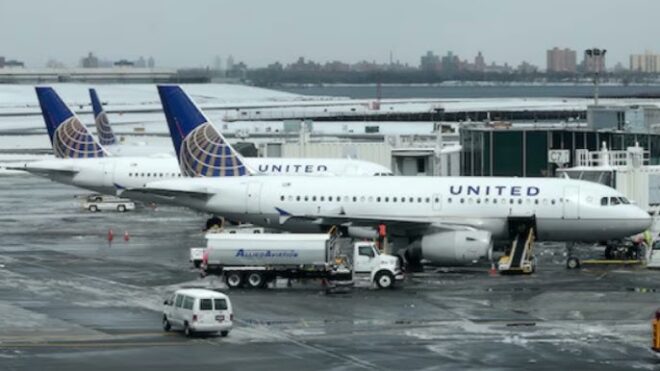
In response to intense thunderstorms and severe weather conditions, all three major airports in the New York City and New Jersey area—LaGuardia Airport, John F. Kennedy International Airport (JFK), and Newark Liberty International Airport—were forced to issue ground stops on Tuesday afternoon, as confirmed by the Federal Aviation Administration (FAA). The decision, which led to widespread travel disruptions, was implemented in a coordinated effort to ensure passenger safety during the volatile weather.
The chain of ground stops began at LaGuardia Airport at precisely 2:10 p.m., followed just five minutes later by similar halts at JFK and Newark Liberty airports. These actions were in direct response to the rapidly developing thunderstorms that had been forecasted to bring heavy rain, strong winds, and the potential for flash flooding to the New York metropolitan area.
By Wednesday morning, the severe weather had moved out of the area, allowing both JFK and Newark Liberty airports to lift their ground stops and gradually resume normal operations. LaGuardia Airport, which had faced the brunt of the disruptions, reopened its runways at 6 a.m., according to updates provided on the FAA’s official website.
Despite the reopening, the effects of the storm were still being felt. Although delays had been significantly reduced to less than 15 minutes by Wednesday morning, the previous day’s ground stops and the lingering effects of the storms led to widespread cancellations and delays. As per the latest reports, a staggering total of at least 1,300 flights were canceled, and over 970 flights were delayed across LaGuardia, JFK, and Newark airports.
The aftermath of the storm left thousands of travelers stranded or delayed, with many facing the frustration of flight cancellations and extended wait times. According to NYC Emergency Management, the travel disruptions were particularly severe during the height of the storm, with delays at JFK Airport reaching up to four hours before the ground stop was initiated. Meanwhile, LaGuardia and Newark airports experienced delays of around two hours.
Passengers expressed their frustration on social media, with many taking to platforms like X (formerly known as Twitter) to voice their concerns and seek updates on their travel plans. The situation was further complicated by the severe weather warnings issued by the National Weather Service, which had placed the Bronx and Manhattan under a flash flood warning and a severe thunderstorm warning through 7:45 p.m. on Tuesday evening.
In addition to the FAA’s ground stops, New York City officials took proactive measures to ensure public safety during the severe weather event. Flash flood and travel advisories were issued across the city, with authorities urging residents and visitors to exercise caution and avoid unnecessary travel. The thunderstorms, accompanied by powerful winds, led to significant flooding in certain areas, with the city’s aging infrastructure struggling to cope with the deluge.
At JFK Airport, representatives issued a statement on X, warning travelers of potential flight disruptions due to the forecasted weather conditions. “Forecasted weather conditions may cause flight disruptions at JFK Airport. Please check with your airline to determine the status of your flight,” the airport’s statement read, highlighting the uncertainty and potential for continued delays even as the worst of the storm had passed.
The events of Tuesday’s severe weather underline the vulnerability of air travel to sudden and extreme weather conditions, particularly in regions like the northeastern United States, where summer thunderstorms can develop rapidly and with little warning. The disruptions faced by thousands of travelers serve as a stark reminder of the importance of preparedness and communication between airports, airlines, and passengers.
As the New York City area recovers from the latest round of severe weather, the focus will shift to ensuring that operations return to normal as swiftly as possible while minimizing the risk of further delays or cancellations. Passengers are advised to stay informed of their flight status and remain in contact with their airlines as they navigate the ongoing challenges posed by unpredictable weather patterns.